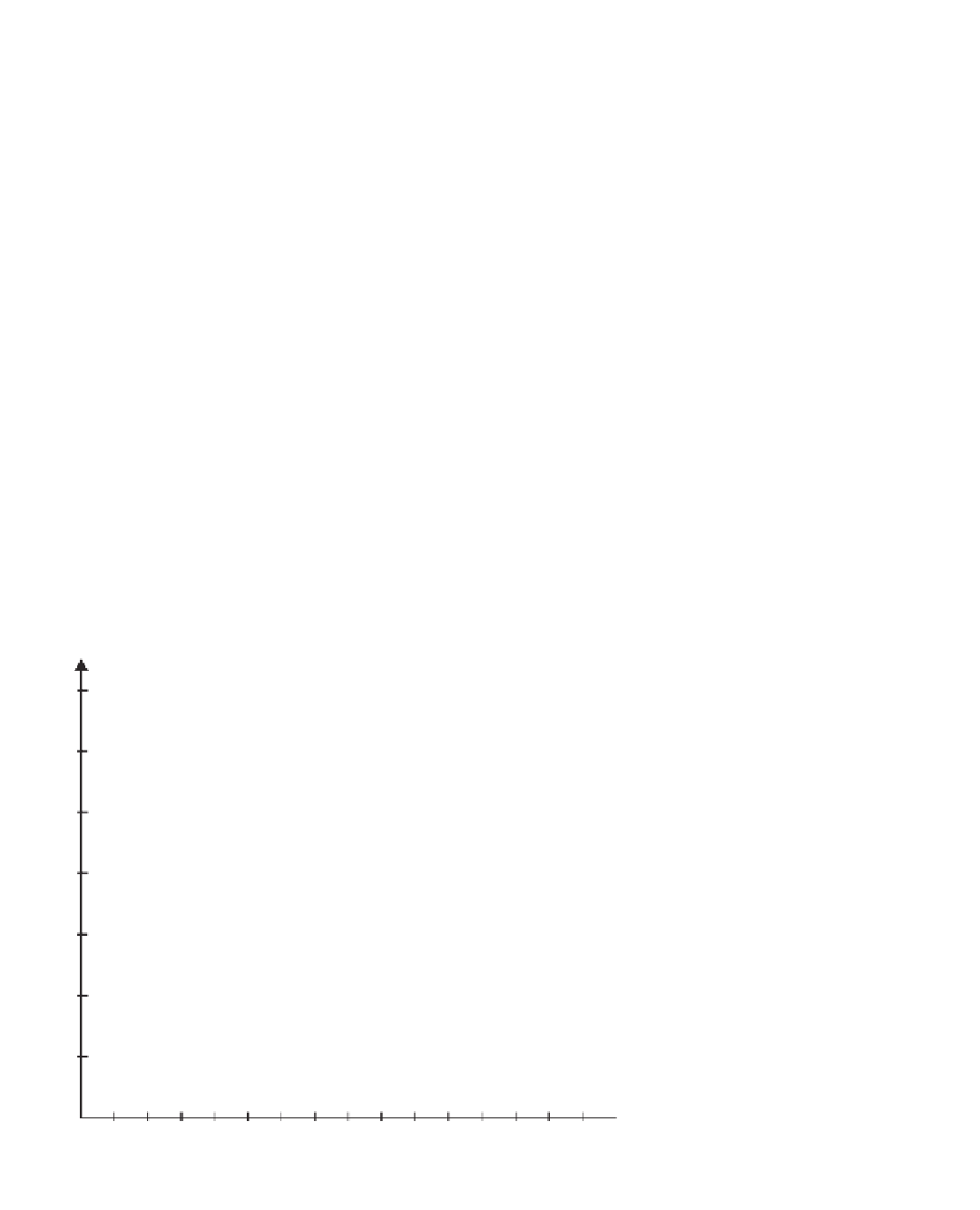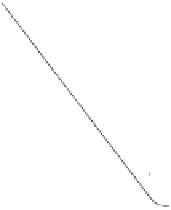Biomedical Engineering Reference
In-Depth Information
parameter variations of the 4007 IC such that the thresholds of Q3 and Q4 are adjusted
to be almost identical. For a 15-V power supply, a 7.5-V zener is required to bring the
threshold of Q4 up to 4 V. Figure 7.10 shows the transfer characteristics of the current
source. The circuit can be implemented as a thin-
fi
lm hybrid using bare-die 4007, thin-
fi
film resistors, and surface-mounted diodes and capacitors. Hochmair reported using this
circuit as part of an eight-channel auditory nerve stimulator capable of delivering
charge-balanced pulses of up to 700
µ
A with a compliance of up to 10 V for a maximum
delivered charge per pulse of 0.5
C.
True symmetrical biphasic current waveforms are often generated through a voltage-to-
current converter driven by the voltage representation of the current waveform desired.
Figure 7.11
a
and
b
show the basic con
µ
floating-load op-amp voltage-to-
current converters. Floating-load circuits provide the best possible performance of any of
the current output circuits, but require the load to
fi
gurations for
fl
float, which makes them unsuitable for
many applications. In these circuits, the load current
I
out
develops a proportional voltage in
R
sense
, which is fed back for comparison to applied input. As long as voltage across
R
sense
is lower than the input voltage, the magnitude of the output voltage increases. The invert-
ing circuit has the advantage of being able scale the transfer function up or down by select-
ing the proper ratio
R
F
/
R
in
.
The improved Howland current pump provides a topology for voltage-to-current convert-
ers that require the load to have one end ground referenced. The circuits of Figure 7.11
c
and
d
act as di
fl
ff
erential ampli
fi
ers with a di
ff
erential input and a di
ff
erential output.
V
in
is
gained up by the ratio of
R
F
/
R
in
and impressed di
erentially across
R
sense
.
I
out
is thus the
voltage across
R
sense
divided by the value of
R
sense
. Since the input is also di
ff
erential, mov-
ing
V
in
to the opposite input simply reverses the relationship of
I
out
to
V
in
. The dominant
error source in the Howland pump topology is ratio matching of the
R
F
/
R
in
resistors. The
ratio of
R
F
/
R
in
for the negative feedback path should closely match the ratio of
R
F
/
R
in
in the
negative feedback path.
ff
[
µ
A]
I
out
700
600
500
400
300
I
SD p-channel
I
SD n-channel
200
100
V
in
[V]
2 3
4
5
6
7
9 10
13
15
1
8
11
12
14
Figure 7.10
Transfer characteristics of the current source of Figure 7.9 for a supply voltage
of 15 V.





Search WWH ::

Custom Search